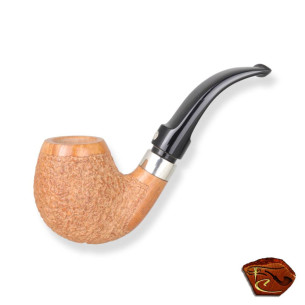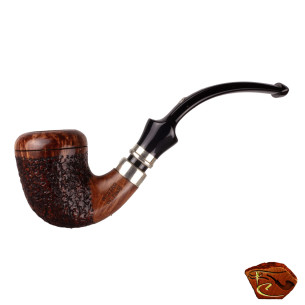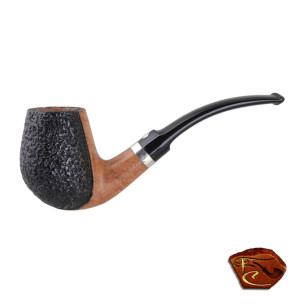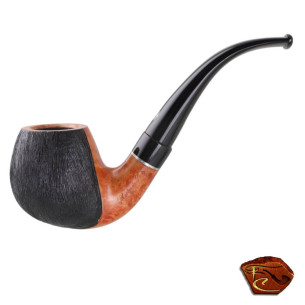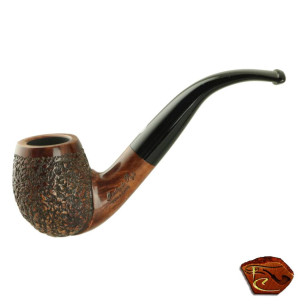Rustic finish
Rusticated pipes: a finish with character
The rusticated finish is an emblematic technique in the pipe world, appreciated as much for its singular aesthetics as for its functional advantages. It involves sculpting the outer surface of the briar to create an irregular relief, offering a unique texture to the touch.
This method, often used when the grain of the briar has irregularities, enhances the value of blocks of wood that would otherwise shun smooth finishes. However, beyond this consideration, rustication gives the pipe a strong visual identity and a comfort in the hand appreciated by smokers.
Many enthusiasts emphasize the tactile pleasure provided by a rusticated pipe, particularly during long smoking sessions. The rough texture provides a secure grip, even in damp conditions, and contributes to efficient heat dissipation. Some smokers even believe that rusticated pipes offer a fresher smoke, although this may vary according to the pipe's design.
Aesthetically, rustication allows for a wide variety of styles, from regular geometric patterns to more organic, raw textures. This variety offers smokers a wide range of choices for expressing their personality through their pipe.
Understanding rusticated finishing: between technical mastery and aesthetic choice
Rustication is the process of hollowing or engraving the outer surface of briar using specific manual or mechanical tools. Unlike sanding, which naturally follows the wood's grain by removing the softest part, rustication creates a pattern independent of the grain, more marked, often deeper, and with a rougher feel.
This work generally comes into play when the briar has irregularities or aesthetic defects that make a smooth or sanded finish unsuitable. Rustication thus enhances the value of briar blocks otherwise discarded for conventional finishes. However, it is by no means a defect or a compromise: combustion quality and mouthfeel remain identical to those of other finishes, provided the overall pipe manufacture is mastered.
From a functional point of view, the rusticated relief helps dissipate heat during smoking, which can be an advantage for some smokers. In addition, the rusticated surface offers a better grip in the hand, particularly in humid conditions or during long sessions.
There are two main approaches to rustication. The most common among European manufacturers is to produce a regular, shallow texture, generally obtained mechanically. This discreet treatment offers a balanced visual alternative at a lower cost. In contrast, some companies like Peterson have developed a more assertive aesthetic: some series feature deeply sculpted surfaces, often produced by hand or semi-manually. These accentuated, sometimes hammered, reliefs are an integral part of the brand's identity and appeal to lovers of strong textures.
Aesthetically, rustication opens up a vast field of variations. Certains modèles présentent un motif très géométrique, tandis que d’autres misent sur un rendu plus organique, creusé à la main, avec un résultat plus brut. The color of the pipe often accentuates these textural plays, through the contrast between darker hollowed parts and lighter edges.
Finally, from an economic point of view, rustication allows access to quality briar pipes at a more affordable price than top-of-the-range smooth finishes, while guaranteeing long-lasting, comfortable use. Elle demeure donc une alternative pleinement assumée, aussi bien dans la production artisanale que dans les fabrications semi-industrielles. You can discover our complete range of rusticated pipes here.

